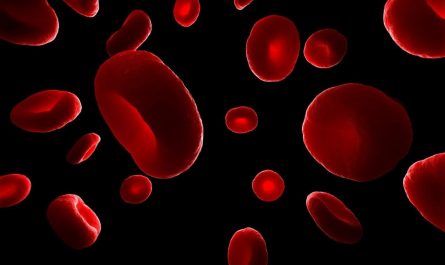Pancreatic cancer remains one of the deadliest cancers with a 5-year survival rate of only around 9% (American Cancer Society, 2020). This is mainly due to the fact that early stage pancreatic cancer often shows no symptoms, making it difficult to detect the disease until it has reached an advanced stage. Once the cancer has spread beyond the pancreas to nearby organs or lymph nodes, the 5-year survival rate drops to around 3% (American Cancer Society, 2020). Due to the challenges in early detection and the aggressiveness of pancreatic cancer, significant research is ongoing to improve both diagnostic methods and treatment options for this deadly disease.
Diagnosis
The initial diagnosis of Pancreatic Cancer typically involves a physical exam along with imaging tests like computed tomography (CT) scans, magnetic resonance imaging (MRI) scans, endoscopic ultrasound (EUS), and positron emission tomography (PET) scans. Blood tests checking levels of the tumor marker CA 19-9 can also provide clues but elevated levels are not specific to pancreatic cancer. A definite diagnosis requires obtaining a tissue sample, usually through EUS-guided fine needle aspiration or surgical biopsy (American Cancer Society, 2020).
Research efforts are focusing on developing more sensitive and specific biomarkers as well as imaging techniques that can detect early stage pancreatic cancer. Circulating tumor DNA (ctDNA) analysis shows promise for non-invasive detection and monitoring of the disease. Studies have found that ctDNA can be detected in the blood of some patients with very early or resectable pancreatic cancer (Cohen et al., 2009). Advanced molecular imaging techniques combining PET imaging with novel radioisotope-labeled probes targeting properties of pancreatic cancer cells may also improve detection capabilities (Dawson et al., 2013).
Surgical Treatment
Surgery remains the only potentially curative treatment option for pancreatic cancer but only 15-20% of patients are candidates due to the advanced stage of disease at diagnosis (American Cancer Society, 2020). For those with resectable tumors located only in the pancreas, surgery to remove the pancreas (pancreatectomy) along with other nearby tissues offers the best chance of long-term survival. Adjuvant chemotherapy with gemcitabine after surgery has been shown to improve survival rates compared to surgery alone in resectable pancreatic cancer (Oettle et al., 2007).
Diagnostic and staging techniques continue evolving to better select patients most likely to benefit from upfront surgery. Developing less invasive surgical techniques may also expand the number of eligible patients and decrease treatment-related risks and complications (Crippa et al., 2016). Researchers are also investigating the use of targeted therapies in combination with surgery to prevent cancer recurrence (Neoptolemos et al., 2018).
Radiation and Chemotherapy
For those with locally advanced unresectable or metastatic pancreatic cancer, treatment focuses on maximizing quality of life and prolonging survival through systemic therapies. Chemotherapy using gemcitabine or FOLFIRINOX (combination of folinic acid, fluorouracil, irinotecan, and oxaliplatin) remains standard first-line treatment based on improved survival compared to gemcitabine alone in clinical trials (Conroy et al., 2011; Burris et al., 1997).
Additional chemotherapy agents and targeted therapies are being studied in combination with gemcitabine or FOLFIRINOX hoping to further improve outcomes. Radiation therapy is sometimes used in combination with chemotherapy for locally advanced disease not amenable to surgery (American Cancer Society, 2020). Researchers are also exploring stereotactic body radiation therapy (SBRT) as a potential alternative to surgery for small, early stage pancreatic cancers (Chaudhuri et al., 2017).
Targeted Therapy
Given the limited efficacy of standard chemotherapy, major research focus is on developing targeted therapies against specific molecular changes driving pancreatic cancer growth and progression. Several common genetic mutations have been identified as potential therapeutic targets including KRAS, p53, Smad4, and BRCA1/2. However, directly targeting KRAS continues to prove challenging due to its complex signaling network (Ying et al., 2016).
Alternative strategies under investigation include indirectly targeting downstream effects of KRAS mutations or combining KRAS inhibitors with other agents (Cox et al., 2015). Clinical trials are also evaluating PARP inhibitors for BRCA mutation-positive pancreatic cancer based on efficacy seen in breast and ovarian cancers (Dees et al., 2019). Angiogenesis inhibitors blocking new blood vessel formation promoting tumor growth have also shown promise (Wang-Gillam et al., 2016). Continued elucidation of the molecular landscape of pancreatic cancer will guide development of more effective targeted therapies.
Immunotherapy
Immunotherapy is an exciting new area of research attempting to harness the body’s own immune system against cancer cells. Checkpoint inhibitors blocking proteins like PD-1 that help tumors evade immune attack have shown durable responses in other cancer types. Unfortunately, results from early pancreatic cancer trials have not been as impressive likely due to the immune-suppressive tumor microenvironment (Brahmer et al., 2012; Bang et al., 2017).
Ongoing work focuses on combining checkpoint inhibitors with other immunotherapies or agents targeted to modify the tumor microenvironment and enhance immune cell infiltration and activation. Vaccines designed to stimulate an immune reaction against specific pancreatic cancer antigens also show promise and are being tested in combination with checkpoint inhibitors or other therapies (Le et al., 2009; Laheru et al., 2008). Adoptive cell transfer using engineered T cells is another emerging area of study (Tran et al., 2014).




